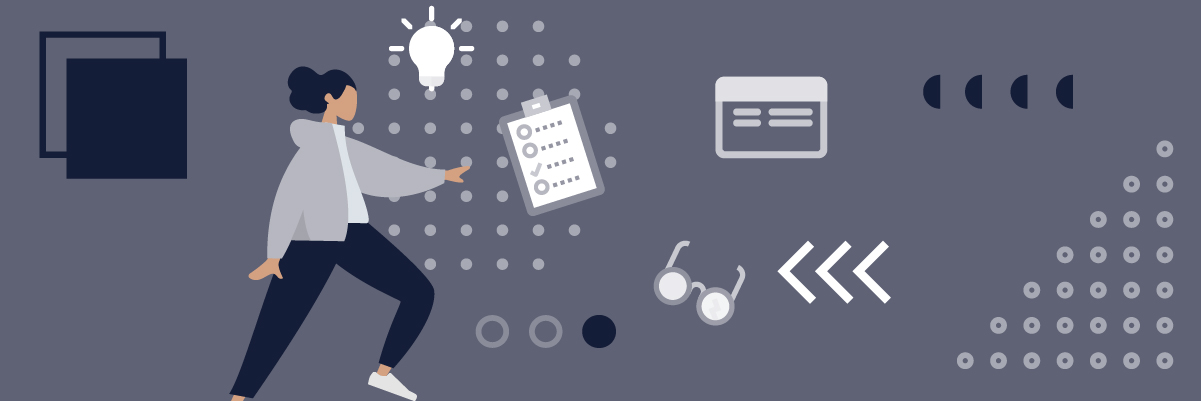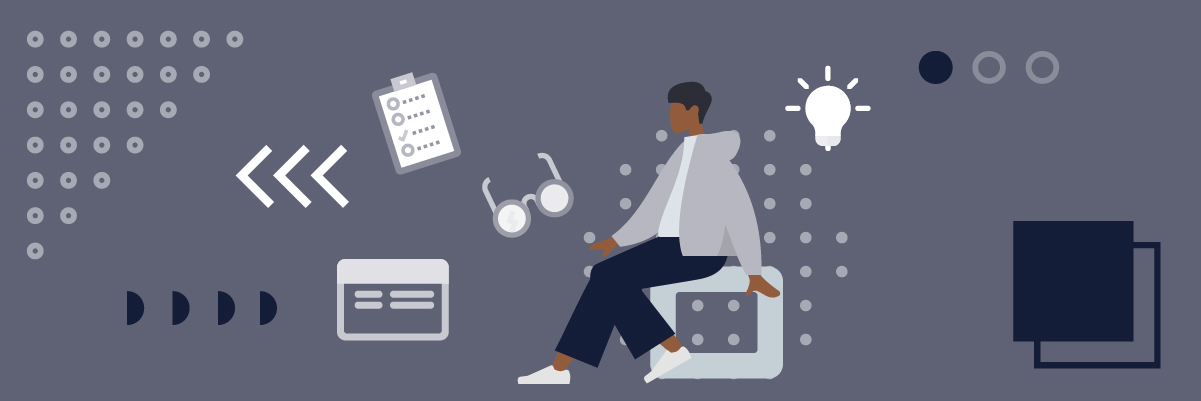Design is an absolutely crucial technical skill that verges on being an artform. And, it’s also pretty much unseen and unknown by the general public, except for “oh, that picture looks cool!” But, when it comes to making apps, games, websites, and more, UI design, in particular, is one of those things that you can’t go without knowing. Today, I’ll let you in on why it’s so important, and why the right pro can make a world of difference for your projects.
UI (User Interface) design, is one of the kings of designs in the tech sphere. Coupled with a good knowledge of UX (user experience), it’s what makes our interfaces sleek, beautiful, intuitive, and usable. And you can bet this type of design is about much more than beauty. Making things look good is just one part of it, but function always should influence form.
Thus, if you don’t know about this area of design, you’re lagging behind your competitors. If you’re a developer in the world of technology, great UI design should be one of your main weapons. And, if you haven’t been giving it its due consideration, I’m going to make a good case why you should starting right now.
Plus, I’ll let you in on how to outsource your design projects to the best pros around. Quick, hassle-free solutions should be your main concern, and I’m here to help.
Let’s get a quick move on, starting with the basic concepts!
This post has been updated in September 2021.
What is UI Design?
UI design is a sub-category within the larger canvas of UX design. Both have the same goal, but you can think of UX as the whole, and UI design as a part of that system. What’s the endgame? To provide customers with the best possible experience when using a feature, app, or product.
In our article about UI/UX design, I wrote the following:
UI is practically interchangeable with the term “design” for laypeople. This is through no fault of their own. Usually, things get so muddled that even employers posting jobs don’t know the difference between UI and UX. And, not every designer is good at both; finding great true UI UX designers is pretty rare, though thankfully their numbers are growing these days.
When it comes to UI or User Interface, we’re talking about a term for the digital ecosystem. If we use it with products, it’s about the direct point of interaction between consumer and product (a touchscreen, a button, a menu). When, on the other hand, we’re talking about digital consumer goods like apps, games, and websites, UI concerns itself with the look, direct feel, and interactivity of the product.
So, UI is interaction and visuals, and UX is about the elusive “feel.” Both are equally crucial, and the whole thing would crumble down into dust without either. But, UI design is probably what laypeople are most familiar with, especially because the focus is on visual navigation and interactivity.
Seeing and Touching
Humans are primarily visual creatures. That’s how we orient ourselves in the world, and that’s why sight tends to outrank other senses. A good UI design expert knows this and helps us navigate through different “touchpoints” in our journey towards the intended destination(s). Their goal is to provide seamless, intuitive interactivity that hinges on key design concepts.
How do they do their work? Good UI design relies on these basic touchstones:
- Color
- Typography
- Good use of space (negative space, or the space around the main focus of an image, counts too)
- Images
- Responsive design (a design that scales for several types of devices)
If we never encounter any cumbersome roadblocks in our journey from A to Z, it’s because a UI designer did their job correctly. A big part of their job is about anticipating and understanding a client’s possible behavior patterns. Therefore, if something’s easy to use, you can call that a resounding success.
But how do they achieve it? Are they psychic? Should we be texting Charles Xavier? Let’s take a look.

UI Design, Intuition, and Empathy
Good UI design is invisible. That’s not to say that you can’t see it, but that it doesn’t draw attention to itself. A good interface is not necessarily flashy, or all bells and whistles; a good interface is something that minimizes the hassle of getting from where you are to where you want to be. It should be so obvious as to avoid thinking about it, and that’s the sign of a capable designer in action.
Therefore, it’s empathy that allows a UI designer to create an intuitive result. By putting themselves in the place of the client, they can anticipate their possible behaviors and patterns of action.
And thus, UI designers have to be great users as well as designers. They need to be able to predict any possible scenario, including both pitfalls as well as successful outcomes. The endgame is to create something that doesn’t necessitate any extraneous thought from the user — they don’t see the design as a puzzle to be solved.
UI design can create the best kind of mindless; a result that feels natural, where the user achieves a kind of flow state:
The flow state happens when you are wholly absorbed in your task. You feel ‘in the zone.’ Your perception of time changes. You are also focused and highly creative.
Positive psychologist Mihály Csíkszentmihályi describes it as an “…optimal state of consciousness where we feel our best and perform our best.” He says that flow is “…being completely involved in an activity for its own sake. The ego falls away. Time flies. Every action, movement, and thought follows inevitably from the previous one, like playing jazz. Your whole being is involved, and you’re using your skills to the utmost.”
UI Design Skills
So, what makes a standout UI designer? Well, it turns out they need a combination of both soft and hard skills. Communication (working within a team, or with a client), collaboration, and empathy are what I would deem soft skills that any good designer needs to have. They’re part of the human aspect of design, and one that, regardless of their skill, few designers would get far without.
Why? Just imagine being a client and talking with a designer that doesn’t get back to you, or doesn’t take your feedback into account. Sounds like hell, doesn’t it? That’s why empathy, communication, and collaboration are crucial aspects of any good designer’s “human toolkit.”
But that’s just the beginning! UI design pros also need to be adept at several “hard skills.” These are what I would deem the “technical toolkit,” learned abilities that are de rigueur. Without these methods, techniques, fundamentals, and practices, they’re lost at sea.
Design
It should go without saying, right? You can’t be a good designer if you don’t have a firm knowledge of basic design tools and sensibilities. But also, in the realm of UI design, it also means much, much more. To wit, a UI designer needs to know how to:
- Create interactive, sleek, intuitive layouts for users to navigate easily.
- This also entails creating buttons, scroll bars, search bars, etc.
- They need to understand how this design will change or scale in different devices (responsiveness).
- Make things look good using design sensibilities.
- Creating a style guide to achieve consistency throughout.
Creating Prototypes
Before the final product’s done, a UI design pro has to create prototypes. These will showcase both the visual aesthetic and the intended function of the final product.
Career Foundry identifies three types of prototypes for projects:
- Low fidelity wireframes are basic layouts and elements drawn on paper or whiteboards. Rough sketches of user flows are great ways to quickly communicate an idea with minimal cost or effort.
- Once the user flows and screen layouts are defined, clickable prototypes are static screens that contain a medium to high level of detail.
- High fidelity prototypes usually feature advanced interactions and transition and basically resemble the final product itself. This is the stage where any fine-tuning takes place before the final designs are handed over to the developers.
Tools
Of course, no UI designer worth their salt can do anything without a solid knowledge of good design tools. These include programs like Adobe XD or Invision, as well as design fundamentals such as Gestalt Principles, color theory, etc.
A complete grasp of fundamentals, as well as current advances, is where it’s all at. Any designer that you’re thinking about onboarding for a project should be prepared in all of these necessary ways.
And that brings us to our final point.
Where to Find UI Design Experts
I think I’ve established why UI design is such a necessary part of creating a good final product. Whether you’re creating a website, app, video game, consumer product, etc., you’ll need somebody to give all their attention to a functioning interface. That is if you want things to get off the ground and start moving, of course.
But design is not something that you can outsource to anyone that comes calling, right?
That’s why at Bunny Studio we’ve made it our mission to pair up the best creative freelancers and clients. We’ve made it so that every pro on our platform is completely vetted; they’ve either got the skills, or they can come calling at a time when they’re ready. But we don’t take chances, and neither should you. Bunny Studio allows you to hire pros that have a significant portfolio and a remarkable success rate, and that’s a guarantee you can count on, especially when it comes to user interfaces.
So, take the guesswork out of the whole thing and hire an amazing UI designer! Submit a project today, and we’ll take it from there!










